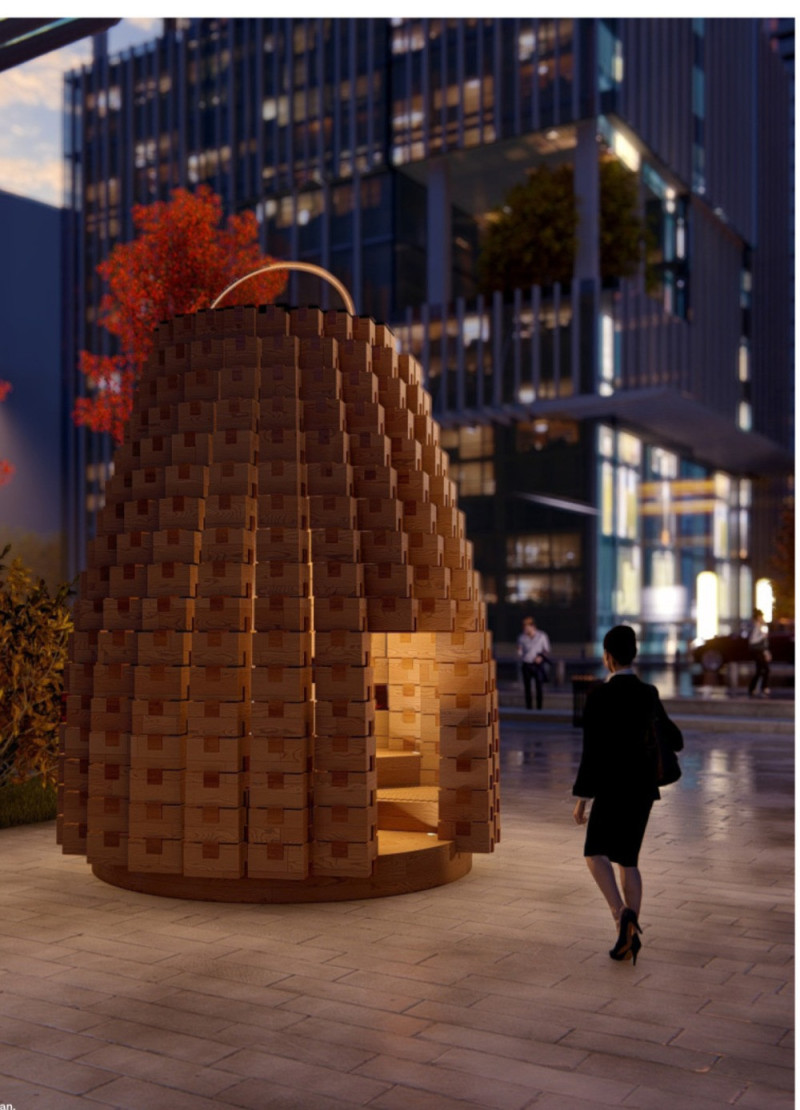5 key facts about this project
The design of Kaeru takes the form of a modular cabin characterized by its bell-shaped structure. This form is not only visually appealing but also practical, promoting an open and inviting atmosphere. By employing timber blocks as the primary building material, the project emphasizes a connection to nature, aligning with Japan’s rich tradition of wooden architecture. The use of Japanese wood is not merely an aesthetic choice; it speaks to the cultural values of durability and warmth, essential for fostering a nurturing space within an urban landscape.
Functionally, Kaeru is designed to facilitate various activities, ranging from solitary reflection to group interactions. Its interior space is thoughtfully laid out with multiple seating arrangements, allowing occupants to engage with each other or find comfort in solitude. This versatility is a fundamental aspect of the project, addressing the contemporary need for adaptable environments that serve diverse communal activities. By incorporating well-placed openings and skylights, natural light floods the interior, creating an uplifting ambiance that further encourages social engagement.
What sets Kaeru apart from other projects is its unique modular approach. This design allows for easy assembly and disassembly, representing a flexible solution for urban spaces that can change over time. As cities evolve, the ability to relocate or modify structures is increasingly important. Kaeru meets this challenge head-on by providing a design that can adapt to different locations and functions, whether it be a public park, a rooftop, or a temporary installation. This adaptability encourages a rethinking of how architectural structures can contribute to urban life and communal experiences.
Sustainability is another cornerstone of the Kaeru project. Emphasizing eco-friendly construction practices, the selection of materials is deliberate and considerate. The project prioritizes locally sourced timber and employs traditional Japanese joinery techniques, such as finger joints and wooden plates, which enhance structural integrity while minimizing environmental impact. This focus not only adheres to modern sustainability standards but also revives traditional craftsmanship that is often overlooked in contemporary architecture.
Kaeru is not just a design; it is a response to the changing dynamics of urban living. By fostering social interaction and providing a welcoming space, it addresses the isolation many individuals have experienced in recent years. The cabin serves as a reminder of the importance of community, offering a space where people can come together, share experiences, and engage with one another in meaningful ways.
For those interested in understanding the nuances of Kaeru more deeply, exploring the architectural plans, sections, and designs provides vital insight into the project’s thoughtful approach. The architectural ideas that underpin Kaeru highlight a balanced integration of form, function, and cultural significance, inviting viewers to appreciate the project’s relevance to contemporary architecture. By delving into these elements, one can gain a more comprehensive understanding of how Kaeru embodies a modern interpretation of traditional values and serves as a beacon for future urban developments.























